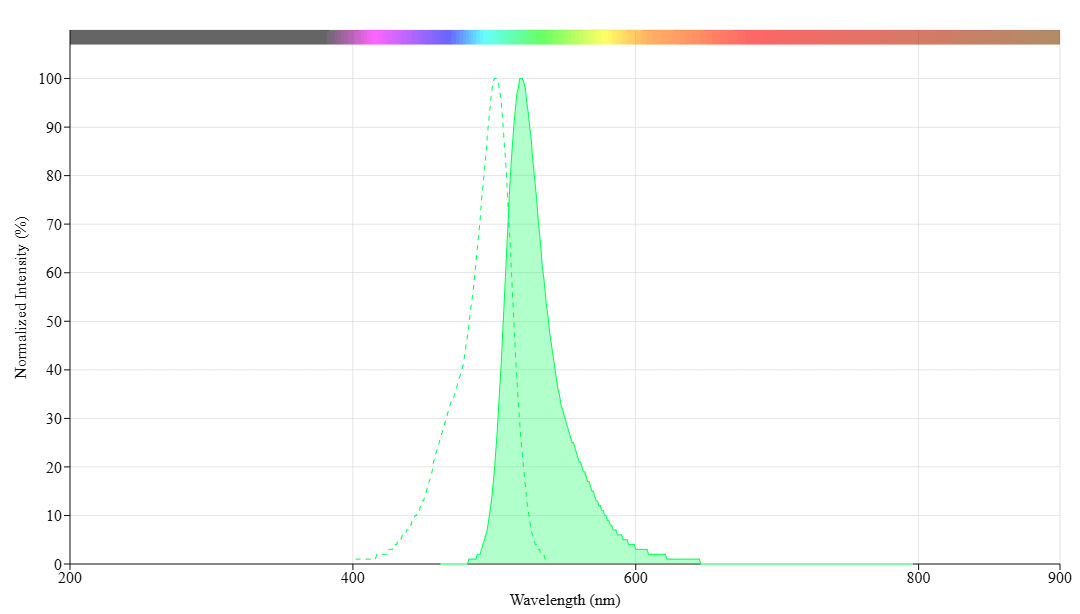iFluor® 500 succinimidyl ester
iFluor® 500 dyes have fluorescence excitation and emission maxima of ~500 nm and ~520 nm respectively. The spectra fill the spectral gap between Alexa Fluor® 488 and Alexa Fluor 514 labeling dyes (Alexa Fluor® is the trademark of ThermoFisher). iFluor® 500 SE is reasonably stable and shows good reactivity and selectivity with protein amino groups. AAT Bioquest's iFluor® dyes are optimized for labeling proteins, in particular, antibodies. These dyes are bright, photostable and have minimal quenching on proteins. They can be well excited by the major laser lines of fluorescence instruments (e.g., 350, 405, 488, 555 and 633 nm). iFluor® dyes span the broadest spectra from UV (320 nm) to IR (900 nm).


| Catalog | Size | Price | Quantity |
|---|---|---|---|
| 1044 | 1 mg | Price |
Physical properties
| Molecular weight | 981.12 |
| Solvent | DMSO |
Spectral properties
| Correction factor (260 nm) | 0.206 |
| Correction factor (280 nm) | 0.088 |
| Extinction coefficient (cm -1 M -1) | 80000 1 |
| Excitation (nm) | 501 |
| Emission (nm) | 520 |
Storage, safety and handling
| H-phrase | H303, H313, H333 |
| Hazard symbol | XN |
| Intended use | Research Use Only (RUO) |
| R-phrase | R20, R21, R22 |
| Storage | Freeze (< -15 °C); Minimize light exposure |
Documents
Contact us
| Telephone | |
| Fax | |
| sales@aatbio.com | |
| International | See distributors |
| Bulk request | Inquire |
| Custom size | Inquire |
| Technical Support | Contact us |
| Request quotation | Request |
| Purchase order | Send to sales@aatbio.com |
| Shipping | Standard overnight for United States, inquire for international |
Page updated on December 16, 2025

